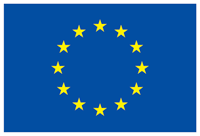So far, more than 6 million kilometres of roads, railways or canals crisscross Europe. In the coming years, this figure is expected to increase considerably in Europe and beyond. Globally, by 2050, 25 million kilometres of new roads and 335,000 kilometres of new railways, will be created to support economic development, mobilising colossal investments estimated at between 3,500 and 4,000 billion dollars per year.
But land use changes induced by extremely dense transport infrastructures, supported by continuous development, contribute directly or indirectly to the deterioration of ecosystems.
Europe must therefore implement innovative and sustainable solutions as quickly as possible to halt the loss of biodiversity and strengthen its resilience by developing nature-based solutions capable of helping to face the challenges that are multiplying and intertwining: floods, droughts, invasive species, etc.
To respond to some of these major challenges, Europe has funded the BISON project, which aims to establish a strategic agenda mobilising not only the research and innovation community but also institutional and private stakeholders to create a transport sector that fully integrates biodiversity into its sustainable development objectives.
After two and a half years of work, the BISON project is coming to an end. BISON has mobilised more than 45 partners from 16 countries, as well as a large number of experts and international organisations sharing the same needs and objectives: to make transport infrastructure sustainable.
At this press conference, the main results of the BISON project will be presented as well as their possible implementation in the road and rail sectors:
- Thierry Goger, FEHRL Secretary-General
- Although transport infrastructure is one of the main causes of biodiversity decline in the world, there are few spaces for connection and dialogue between mobility and biodiversity protection issues. However, aware of the complexity of these challenges, many initiatives are emerging simultaneously in Europe and beyond. What role should Research and Innovation play in supporting real transformative change? How can we best help operational actors to integrate potentially contradictory recommendations? What tools should investment banks have at their disposal to ensure sustainable investments at the scale of the huge transport projects already underway? These are the questions that this presentation will answer based on the BISON results.
- Sylvain Moulherat, CEO and Scientific Director at TerrOïko, technical representative of the French Union for Ecological Engineering (UPGE)
- In a world faced with global changes such as global warming, profound geopolitical upheaval, or the collapse of biodiversity, predicting what the future of biodiversity integration in the transport system might look like is a real challenge. However, the BISON project has done just that by guiding and prioritising the EU’s future RDI needs to protect biodiversity through four scenarios of how the transport system might function in 2050. Thanks to these scenarios and the associated recommendations, the ecological engineering sector, particularly in France, is preparing for the future to meet the growing demands and contribute to the development of sustainable transport infrastructures.
- Lucie Anderton, Head of sustainability at UIC, International Union of railways
- How can railways promote ecological connectivity and conservation, not only as an effective means of transport to combat climate change, but also as green corridors for wildlife? Lucie Anderton will address these challenges and present inspiring success stories from around the world and case studies to promote thriving habitats for flora and fauna. Her reflections are intended to encourage transport stakeholders to take on our common responsibility to safeguard the planet’s priceless natural heritage, and to encourage them to grasp the importance of the global vision of the harmonious coexistence of transport and biodiversity conservation.
- Patrick Mallejacq, PIARC Secretary General
- The BISON project has complemented the work of the experts of PIARC, the World Road Association, and helped them better understand the impact of roads and road transport on wildlife habitats and their interconnections and identify measures to mitigate the effects of barriers on wildlife. Mr Patrick Mallejacq will present the steps that the World Road Association will take to share their recommendations with road administrations and road operators from their 125 member countries.
